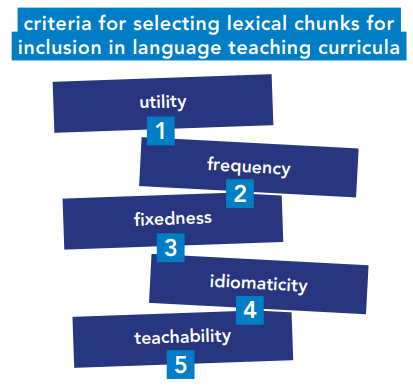Written by Ernesto Buttó, co-authored with GPT4o
Objective: Create a strategic framework to guide the development of Feature 2 (Scenario-Based Language Practice) in LingoStand, ensuring effective product decisions and prioritization.

Introduction
Feature 2 aims to provide immersive, real-life scenarios tailored to specific language functions, helping users practice and improve their language skills in practical contexts. This framework outlines the key elements, language skills, and specific language functions prioritized for development, serving as a reference for discussions and product decisions.
It is pretty interesting to me how little is out there regarding teaching through specific learning functions. Though I did find Cambridge reference material (summarized below), it is surprising how little structure there is.
But what surprised me even more is how quickly GPT-4o came up with a structured version prioritized for immigrants (below). Even though I could not find this structure online, it makes a lot of sense to me if I recall my immigrant past experiences.
Can it be that LLMs know so much about language that they can come up with new theories?
Whether it is hallucinating or not, I think it makes a lot of sense and it is worth building around this idea.
Specific Language Functions Prioritized for Immigrants
- Immediate Needs and Basic Interactions: Greeting, Introducing, Requesting, Asking Questions, Basic Comprehension, Basic Communication.
- Daily Transactions and Appointments: Giving Directions or Instructions, Shopping and Transactions, Making Appointments.
- Building Relationships: Thanking, Making Invitations, Offering, Apologizing.
- Personal Expression and Interaction: Expressing Preferences, Making Suggestions, Giving Opinions, Expressing Emotions, Describing, Narrating, Empathizing, Agreeing and Disagreeing, Rephrasing
- Handling Issues and Feedback: Complaining, Giving and Receiving Feedback, Giving Advice, Negotiating
Gen AI & Simulations and Roleplay for Learning Framework
It will leverage on our exisiting technology and on the paper and prompts described in Instructors as Innovators by Ethan R. Mollick and Lilach Mollick.
Insights from Cambridge Frameworks
- Learning Language in Chunks: Emphasizes the importance of teaching language in fixed phrases or chunks, rather than isolated words or grammar rules. This approach helps learners use language more naturally and fluently in real-life contexts. Incorporating chunks into lessons through repetition, role-plays, and contextual usage enhances the learning process by providing meaningful and relatable content.
- Source: Learning Language in Chunks
- Functional vs. Situational Language: Highlights the difference between functional language (expressions for specific functions like requesting or inviting) and situational language (expressions used in specific situations like a restaurant or doctor’s appointment). It’s important to present and practice these expressions in relevant contexts to enhance understanding and usage.
- Source: Teaching Functional vs. Situational Language
Language Skills to Target in Simulations
- Vocabulary: Expanding vocabulary related to specific topics (e.g., travel, health, emotions, etc.).
- Comprehension: Understanding spoken and written language in the context of the role-play.
- Accuracy and Grammar:
- Using correct grammar and vocabulary to convey meaning effectively.
- Practicing specific tenses (past, present, future), verb forms (conditional, subjunctive), and sentence structures.
- Pronunciation: Focusing on correct pronunciation of words, intonation, and stress patterns.
- Fluency: Improving the ability to speak smoothly and naturally without excessive hesitation.
- Expression: Communicating ideas and feelings clearly and effectively.
- Register: Using appropriate language for different social contexts (formal, informal, etc.).
Language Functions Examples
1. Immediate Needs and Basic Interactions
- Greeting: Initiating a conversation or acknowledging someone’s presence.
- Example: “Hello!”, “Good morning.”
- Introducing: Presenting oneself or others.
- Example: “Hi, my name is John.”, “This is my friend, Sarah.”
- Requesting: Asking for something or asking someone to do something.
- Example: “Can you help me find the bus stop?”, “Could you tell me where the nearest grocery store is?”
- Asking Questions: Practicing different types of questions (open-ended, closed-ended, clarifying, etc.).
- Example: “What time does the bus arrive?”, “Could you explain that again?”
2. Daily Transactions and Appointments
- Giving Directions or Instructions: Explaining how to do something or how to get somewhere.
- Example: “Turn left at the next corner.”, “How do I get to the city center?”
- Shopping and Transactions: Handling basic transactions in stores and markets.
- Example: “How much does this cost?”, “I’d like to buy this, please.”
- Making Appointments: Arranging to meet or do something at a specific time.
- Example: “I’d like to schedule a doctor’s appointment.”, “Can we meet at 3 PM?”
3. Building Relationships
- Thanking: Expressing gratitude.
- Example: “Thank you for your help.”, “I appreciate your assistance.”
- Making Invitations: Inviting someone to an event or activity.
- Example: “Would you like to come to dinner?”, “Let’s go for a walk.”
- Offering: Providing something to someone or proposing assistance.
- Example: “Would you like some help?”, “Can I offer you a ride?”
- Apologizing: Expressing regret and taking responsibility for mistakes or offenses.
- Example: “I’m sorry for being late.”, “I apologize for the misunderstanding.”
4. Personal Expression and Interaction
- Expressing Preferences: Indicating likes, dislikes, or preferences.
- Example: “I prefer tea over coffee.”, “I don’t like spicy food.”
- Making Suggestions: Proposing ideas or solutions in a collaborative manner.
- Example: “How about we go to the park?”, “I suggest trying the new restaurant.”
- Giving Opinions: Expressing thoughts and feelings about a topic clearly and convincingly.
- Example: “I think this is a great idea.”, “In my opinion, the book was better than the movie.”
- Expressing Emotions: Communicating feelings (happiness, sadness, anger, etc.) effectively.
- Example: “I’m so happy for you!”, “This news makes me really sad.”
- Describing: Providing detailed information about people, places, things, or events.
- Example: “The house is large and has a beautiful garden.”, “She is wearing a red dress.”
- Narrating: Recounting events in a clear and engaging manner.
- Example: “Yesterday, I went to the beach.”, “Once upon a time, there was a king.”
- Empathizing: Showing understanding and compassion for others’ feelings and experiences.
- Example: “I understand how you feel.”, “That sounds really tough.”
- Agreeing and Disagreeing: Expressing agreement or disagreement politely and respectfully.
- Example: “I agree with you.”, “I don’t think that’s correct.”
- Rephrasing: Teaching different ways to convey the same message, enhancing flexibility in language use.
- Example: “You should consider joining our team.”, “It’s really worth trying.”
5. Handling Issues and Feedback
- Complaining: Expressing dissatisfaction or grievances.
- Example: “This meal is too salty.”, “I’ve been waiting for an hour.”
- Giving and Receiving Feedback: Providing constructive criticism and accepting feedback gracefully.
- Example: “Your presentation was great, but you could speak a bit louder.”, “Thank you for the feedback, I will work on it.”
- Giving Advice: Offering suggestions or recommendations for someone’s benefit.
- Example: “You should see a doctor.”, “It’s a good idea to save money.”
- Negotiating: Reaching a compromise or agreement through discussion and flexibility.
- Example: “Can we meet halfway on this?”, “Let’s find a solution that works for both of us.”
Development Phases
Phase 1: Basic Scenario Implementation
- Development Efforts: Medium
- Core Scenarios: Develop scenarios for immigrants involving key language functions.
- Examples include asking for directions, making a transaction, listening for instructions, and describing something.
- User Interaction:
- Input: Text input via typing or speech-to-text tools.
- Output: Text feedback for users to read and translate.
- Immediate Feedback: Users must complete tasks correctly to progress.
Phase 2: Enhanced Feedback and Customization
- Development Efforts: High
- Expanded Scenarios: Include more complex scenarios covering diverse language functions and contexts.
- Customization: Allow users to adjust scenarios to fit their specific needs, enhancing relevance and engagement.
Incorporating Feedback into Future Simulations
- User Data Analysis: Continuously analyze user performance data to identify common challenges and areas for improvement.
- Action: Implement machine learning algorithms to track and analyze user progress.
- Adaptive Learning Paths: Create adaptive learning paths that adjust to the user’s proficiency level and learning pace.
- Action: Develop an AI-driven system that recommends specific scenarios based on user performance and feedback.
- Personalized Feedback: Provide personalized feedback and suggestions for improvement in future simulations.
- Action: Use AI to generate detailed feedback reports that guide users on specific areas to focus on.
- Iterative Improvement: Regularly update and refine scenarios based on user feedback and performance data.
- Action: Establish a feedback loop where users can suggest improvements and new scenarios.
Conclusion
By focusing on immediate needs, daily transactions, building relationships, personal expression, and handling issues, the scenarios will offer practical and immersive language practice for users. This strategic approach will guide development decisions, prioritize features, and facilitate productive discussions with stakeholders. Integrating feedback into future simulations will ensure continuous improvement and personalized learning experiences.
